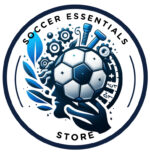How To Improve Your First Touch In Soccer
The first touch in soccer is like the opening note of a symphony—it’s all about setting the stage. In simple terms, the first touch refers to how a player controls the ball after receiving it, whether it’s with their foot, chest, thigh, or even the head. Players need to control the ball with precision and elegance to prepare for their next move, whether passing, shooting, or dribbling.
Why is it such a big deal? A good first touch can make all the difference on the field, unlocking opportunities to pass or shoot and keeping you one step ahead of the defenders. It’s like having an instant advantage, allowing you to dictate play and maintain possession under pressure. Just ask anyone who’s been outplayed by a midfielder with a silky touch!
But let’s be real—it’s not always picture-perfect. Many players, especially when starting out, tend to bounce the ball a bit too far from their comfort zone or trap it awkwardly, resulting in lost possession or opportunities. Understanding these common pitfalls is the first step in transforming your game.
Want some inspiration? Look at legends like Zinedine Zidane or Andrés Iniesta. Their first touch is a work of art, often leaving opponents puzzled and opening up spaces that seemed non-existent. Study their movements and you’ll see, there’s a rhythm and awareness they bring to each interaction with the ball. It’s not just about technical skill; it’s about finesse and decision-making under pressure.
Mastering the Art: How to Improve Your First Touch in Soccer
Getting better at your first touch isn’t about magic tricks; it’s about dedication and practice. Start with some basic drills that focus on ball control. Dribble a ball at varying speeds, tweak your direction quickly, and practice trapping using different parts of your foot. The key is to keep things fresh and unpredictable, so you mimic the chaos of an actual game.
The secret sauce? Reaction time and dexterity. Pop a video online; you’ll find exercises that can enhance both. Agility ladders and quick feet exercises are great for building up that speed, making it easier to control the ball under pressure.
There’s a-time-and-a-place for leisurely practice but honing that first touch really shines when you’re firing under pressure. Set up drills where you have to make quick decisions after taking your first touch. Whether it’s a quick pass to a friend or darting past a dummy defender, simulate those tight spots.
Technology can also be your buddy here. Devices like rebound boards can help with practicing alone, giving you quick-fire opportunities to finesse that touch. Even apps that offer training programs can be useful, giving you structured routines to follow. It’s all about leveraging tools and tech to refine your approach.
Developing Reliability: How Can a Soccer Player Cultivate a Consistent First Touch?
Crafting a reliable first touch isn’t something that happens overnight. It requires setting up a solid routine that keeps you on your toes, literally and figuratively. Start by assessing your current abilities and sketch out a plan that targets your weaknesses while enhancing your strengths.
Developing mental strategies goes hand-in-hand with physical training. This means you need to practice keeping focus and maintaining calm under game-like conditions. Visualization techniques, where you imagine controlling the ball smoothly before it happens, can be powerful. This mental prep can sharpen your reactions on the field.
Feedback is your best friend. Working closely with coaches or teammates who can offer constructive insights is invaluable. Their input can pinpoint subtle things you might not catch yourself, providing new perspectives and spurring growth.
Remember, no plan is set in stone. As you keep practicing, take time to review your process periodically. Ask yourself what’s working, what isn’t, and make adjustments accordingly. This ongoing evaluation allows you to find and fix any kinks in your approach, making sure your first touch stays sharp and match ready.
Training Alone or With a Partner: Do You Need a Partner to Improve Your First Touch in Soccer?
You don’t always need a partner to work on your first touch, which is great for anyone looking to practice on their own time. Solo drills like wall passes can be super effective. Just find a wall or rebounder and kick the ball at different angles. It challenges your touch with fast returns, simulating in-game dynamics.
While solo practice offers lots of flexibility, having a partner can elevate your training. A partner can add unpredictability by choosing the speed and direction of passes, pushing you to adapt quickly. It introduces a social element, making sessions more engaging and often motivating.
If a partner isn’t around, don’t sweat it. You can create a similar environment by practicing with multiple balls, changing direction and speed yourself. Structured solo routines can be just as transformative; it’s about consistency and pushing your limits.
Balancing both individual and group sessions is smart practice. Solo drills build personal skills, while training with others helps integrate them into a team context. By embracing both, you get the best of both worlds. This dual approach ensures you’re adaptable and ready for any game-time situation.
